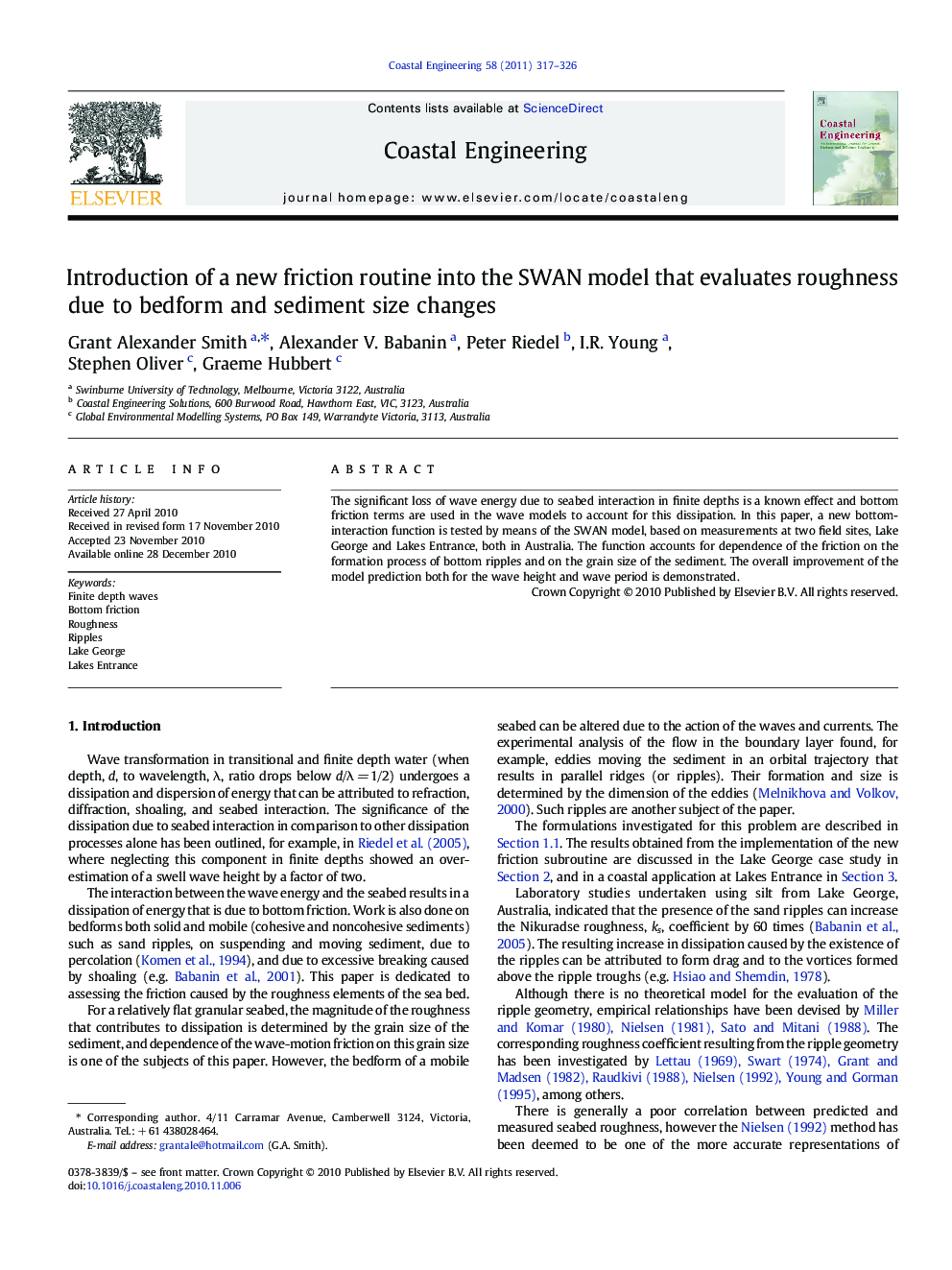| Article ID | Journal | Published Year | Pages | File Type |
|---|---|---|---|---|
| 1721071 | Coastal Engineering | 2011 | 10 Pages |
Abstract
The significant loss of wave energy due to seabed interaction in finite depths is a known effect and bottom friction terms are used in the wave models to account for this dissipation. In this paper, a new bottom-interaction function is tested by means of the SWAN model, based on measurements at two field sites, Lake George and Lakes Entrance, both in Australia. The function accounts for dependence of the friction on the formation process of bottom ripples and on the grain size of the sediment. The overall improvement of the model prediction both for the wave height and wave period is demonstrated.
Related Topics
Physical Sciences and Engineering
Engineering
Ocean Engineering
Authors
Grant Alexander Smith, Alexander V. Babanin, Peter Riedel, I.R. Young, Stephen Oliver, Graeme Hubbert,
